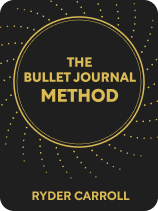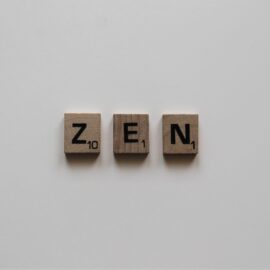

This article is an excerpt from the Shortform book guide to "The Bullet Journal Method" by Ryder Carroll. Shortform has the world's best summaries and analyses of books you should be reading.
Like this article? Sign up for a free trial here .
Do you want to reach new goals this year? Are you keeping track of your progress? How can bullet journaling help?
If you want to reach a new goal or create better habits, you should record your progress in a bullet journal. Making a bullet journal progress tracker can help keep you motivated and help keep you on track when you do your monthly reviews.
Here’s how to keep a bullet journal progress tracker.
Tracking Progress
When creating a bullet journal progress tracker, Ryder Carroll argues that there are endless opportunities for creativity in both the design itself and in what you choose to track. As long as what you’re tracking gives you valuable insight, you can track anything from your savings goals, to the books you read, to how often you exercise each month.
Depending on what you track, Carroll recommends either creating an individual customized section or adding a tracker to your monthly overview. He says that tracking your progress through your monthly overview is especially useful for tracking your habits. To do this, first add a key for whatever habits you want to track (for example, R = Read). Then, create columns to the right of your monthly overview calendar for each habit. Finally, add a task bullet for each date of the month that you can X off on the days you complete the task.
Monitoring your progress yields valuable insights that can increase your self-awareness. One way in which you can glean these insights is by comparing your tracker to your daily records. (For example, you may realize after looking at your last daily record that you didn’t read yesterday because you were busier than normal.) Additionally, you can observe your habits over time to discover what’s working and what isn’t. (For instance, you may come to realize after tracking your reading habits that a goal of 30 minutes of reading per day is too unrealistic for your hectic schedule.)
(Shortform note: Although Carroll argues that monitoring your progress can increase self-awareness, he doesn’t explain why this is the case. Research shows that despite our best intentions, we’re terrible at self-reporting our behavior because we tend to recall things not as they really were, but as we expected or wanted them to be. This means that we can’t rely on our perception when reflecting on our behavior. Monitoring progress can help us build better self-awareness by providing objective behavioral data that aren’t tainted by our skewed recollections.)
| Getting Started With Habit Tracking Even with Carroll’s instructions for how to track habits effectively, you may still feel unsure about where to start. If you’re at a loss as to which habits to track, data show that some of the most popular habits to track as of 2021 included drinking more water, meditating, waking up early, setting priorities for the day, studying, writing in a journal, consuming no sweets or alcohol, and expressing gratitude. Deciding which habits to track isn’t the only consideration—you also need to figure out how to track them. Depending on the habit you want to track, one method may work better than another. For example, tracking in your monthly overview may be useful for daily or even weekly habits, but it’s probably not ideal for monthly habits like paying bills or deep-cleaning your house. This is because it’s not possible to see your progress when focusing on just one month at a time. In these cases, it would be best to use Carroll’s alternative of creating an individual customized section. Create a tracker that gives a clearer overview of how well you’ve stuck to your monthly habits throughout the year. |

———End of Preview———
Like what you just read? Read the rest of the world's best book summary and analysis of Ryder Carroll's "The Bullet Journal Method" at Shortform .
Here's what you'll find in our full The Bullet Journal Method summary :
- A comprehensive guide to using the Bullet Journal Method
- How to maintain a journaling practice that can improve your overall quality of life
- How to extend the method beyond productivity to a practice in mindfulness






